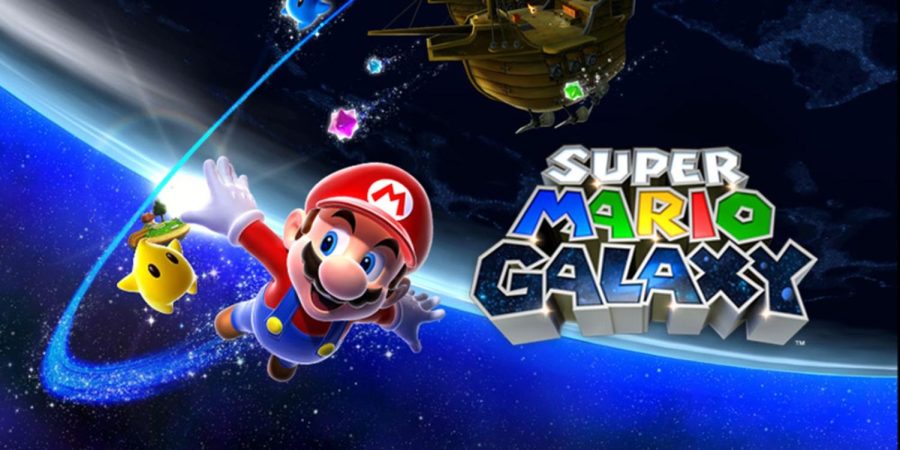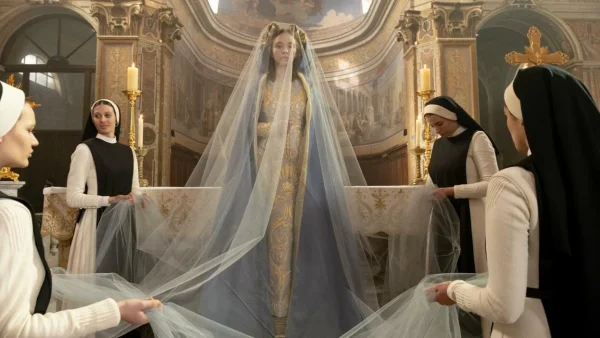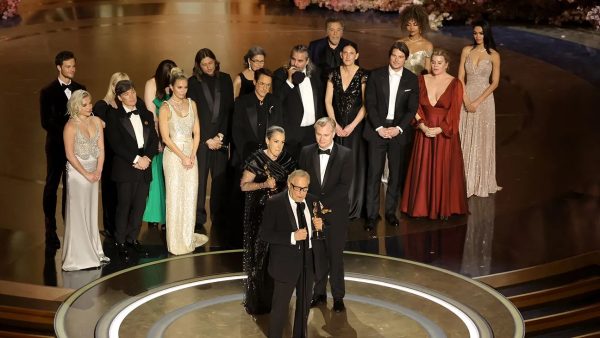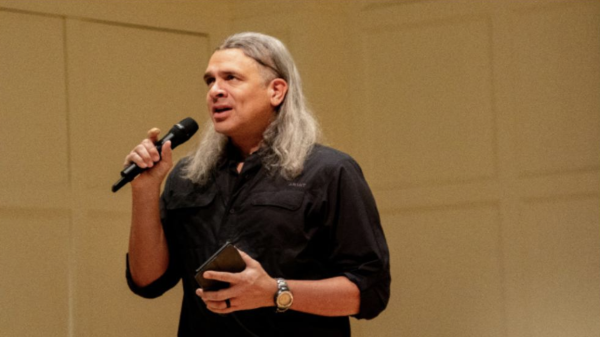Thank you for playing: “Super Mario Galaxy”
A reflection on the out-of-this-world video game’s legacy 15 years on
“Super Mario Galaxy” continues to captivate players 15 years after its release, writes Alyssa Soltren.
November 6, 2022
My small fingers gently held the shiny new disc as I inserted it into the Wii console that I had just received for my sixth birthday. I hastily grabbed the Wii remote and anticipated the moment my video game would show up on the screen. Before me appeared a blue expanse, followed by a familiar voice that read out the superimposed title: “Super Mario Galaxy.” And with that, I pressed “START”. I had no idea where this game was about to take me.
On Nov. 1, 2007, Nintendo released what you now find frequenting lists for the greatest video games ever made. “Super Mario Galaxy” was an outstanding feat for a myriad of reasons. Probably the most recognizable achievement is the game design’s revolutionary use of spherical physics, which allow players to explore worlds and moons like never before. It was also the first Super Mario game to implement a full orchestra for its epic, space odyssey-like soundtrack. The cutscenes are nothing short of cinematic. Beyond these well-earned merits, though, there is another layer to this beloved game. There is a certain essence that causes many players to find themselves reminiscing on their planet-hopping adventures, and it evokes a longing to hit the start button for the first time just as they did all those years ago. Such a description sounds like something a work of art would do. I believe that this video game is indeed an example of one.
Every artwork has its themes, and “Super Mario Galaxy” certainly has some to offer. I would say that the most evident of them is the dichotomy of sheer abundance and gaping emptiness. Starting out your exploration of new galaxies can feel overwhelming as you take in the number of them to be unlocked — all viewed from the massive “observatory” that serves as your home base. There are new mechanics and power-ups with which to experiment, mounds of colorful Star Bits to collect and hurl at targets, bonus worlds to unlock, gravitational physics to exploit by long-jumping off a small planetoid then remaining in orbit for as long as possible and so on.
There’s so much to see and do, and you don’t want to slow down. But after collecting a group of Star Bits I saw floating in the sky beyond the galaxy’s edge, I stopped to stare at… nothing. Well, there were some distant pinpricks of stars or galaxies, but they were still so far away. I would never make it to them through the void before me — this void that enveloped a charming world that felt smaller now. Back at the starship observatory, I found myself gazing down at the horizon of the blue planet below, wondering what was down there, if anything at all. Beyond that were innumerable points of light all around, and I somehow felt that I had seen everything and yet nothing.
Adrift in vast space on a strange starship, it was easy to feel lonely even with Toads, Lumas and other characters around. I wandered and eventually found the ship’s library, where a story of loneliness and other things waited to be told. Mario and the Lumas gathered around the fireplace to listen to Rosalina, the leader of the observatory. She opened her book, and a story of her life played out on softly illustrated pages before my very eyes. I learned of how she left her family and home planet to help a lost Luma find its mother, and how the girl began to miss her old life as time passed.
Even as a young child, Rosalina’s storybook accompanied by the game’s vague atmosphere of sadness managed to settle on me. I was only seven when playing outside with my father and sister was followed by me crying to my mother that I didn’t want our family to end. Why couldn’t everything remain the way it was in a warm summer glow? It was the first of many times that I would encounter such a profound feeling.
But as the game progressed, so did the storybook. Rosalina grew older and was designated “Mama” by a whole crowd of cheerful Lumas. She discovered their ability to transform into any kind of celestial object. Regardless of their destiny to leave and change, she built a new home for all of them to live in together. She still visited her old home planet occasionally, but Rosalina also learned to be happy in her new world with her growing family. Finally, you learn that the starship is that very home she built and that star power is all around you.
It’s no wonder this game resonates with its young players 15 years later. Our lives have since changed, and we’ve found ourselves in unfamiliar settings where there’s so much to explore, yet we still get lonely. It’s kind of ironic that we want to return to the game that encourages us to venture into new, far-off places, but maybe that makes perfect sense. “Super Mario Galaxy” tells us that it’s okay to grow up and it’s okay to miss home because still more lies ahead, and love is not lost or forgotten. And, of course, it’s just a really fun game to play.
Over fourteen years ago, I began my journey with “Super Mario Galaxy.” Now that it has been released on the Nintendo Switch, I recently began playing it again. Rosalina’s words when the universe is reborn in the game’s finale echoed through my mind: “But the cycle never repeats itself in quite the same way.” What would I do differently? What would feel the same?
As I watched Mario wake up on his very first moon, I wanted to freeze and capture that poignant moment. But the moment passed, and I recalled that there was still a masterpiece of sights, sounds, motions and emotions ahead of me. Such is life itself. The wondrous display of every idea and dream in “Super Mario Galaxy” is what makes it a classic worthy of being celebrated.






















